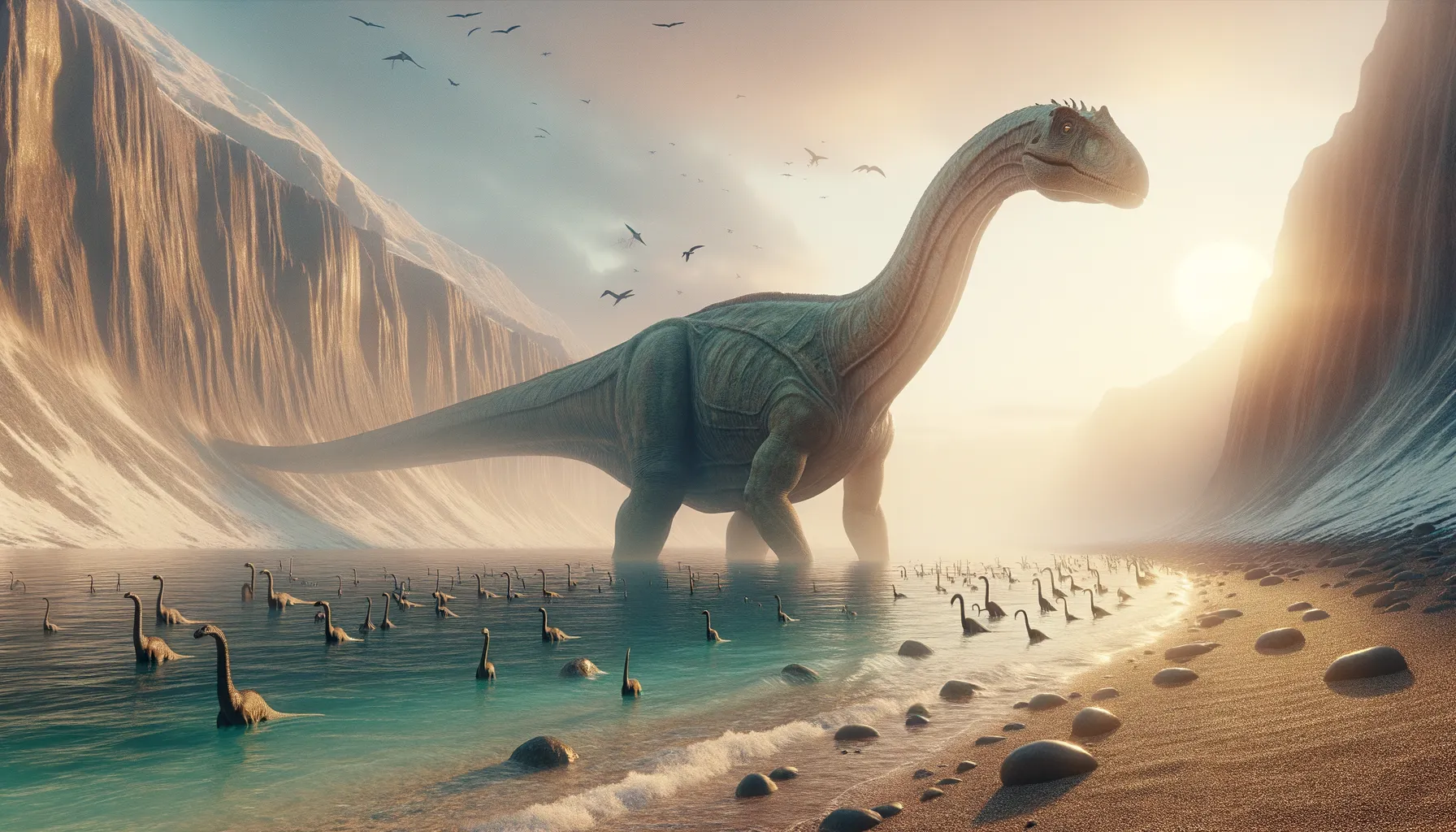
Paralititan
The colossal giant of ancient tidal lands.
Period
Cretaceous
Length
Estimated at 26 meters long.
Height
Around 9 meters tall at the shoulder.
Weight
Approximately 59 metric tons.
Paralititan was a massive sauropod dinosaur that roamed the earth during the Cretaceous period. Known for its tremendous size, it is considered one of the largest dinosaurs ever discovered. Fossils of Paralititan were found in Egypt, in an area that was once a coastal ecosystem. Its name means 'tidal giant', hinting at the watery environment where it lived and thrived.
Diet
Paralititan was herbivorous, primarily feeding on vegetation available in its habitat. This included a variety of plants such as ferns and conifers that grew in its coastal environment.
Hunting
Being a herbivore, Paralititan did not hunt. It foraged for plant material and likely consumed large amounts daily to sustain its massive size.
Environmental challenges
Paralititan faced challenges from climatic changes that affected the availability of vegetation. Rising and falling sea levels influenced its coastal habitat, potentially leading to periods of abundant and scarce food. Additionally, as a large dinosaur living in a dense forest environment, maneuvering through thick vegetation would have been a challenge.
Speed
Likely slow-moving due to its massive size.
Lifespan
Estimated to be around 60-80 years.
First discovery
Unearthed in Egypt in the early 2000s.
Fun Facts
- Paralititan was a massive dinosaur from the Cretaceous period, believed to be as long as a school bus.
- Its name means 'tidal giant' because it was found near what used to be an ancient coastal habitat.
- Paralititan is known for its gigantic size, with some estimates suggesting it weighed as much as 65 tons.
- This dinosaur was a herbivore, feeding mainly on plants in its swampy environment.
- It lived approximately 94 million years ago in what is now known as Egypt.
- Paralititan is only known from a few fossil bones, making it a mysterious giant of its time.
- Despite its size, Paralititan likely had natural predators, such as large carnivorous dinosaurs.
Growth and Development
Paralititan grew rapidly during the early stages of its life to reach a formidable size, providing protection from predators. Its growth required significant energy, emphasizing the need for an abundant food supply. Maturity was likely reached after several decades, at which point it could reproduce and continue the species.
Habitat
It inhabited the coastal regions of what is now Egypt, suggesting a preference for wet, forested environments. These ecosystems provided a rich variety of plant life, necessary for its herbivorous diet. Seasonal changes in water levels due to tides and flooding would have periodically reshaped its habitat.
Interaction with other species
Paralititan interacted with other herbivores, competing for vegetation resources. Carnivorous dinosaurs, such as theropods, might have viewed young or weak individuals as potential prey. It likely traveled in groups, offering defense against predators through sheer numbers and size.
Natural lifespan
Paralititan could live up to 80 years in the wild.
Reproduction
Paralititan likely laid eggs in nests constructed from vegetation, as observed in many other sauropods. The hatchlings were probably cared for by the group, increasing their survival rate. Reproduction was seasonal, possibly timed to ensure a plentiful food supply for the growing young.
Social behaviour
Paralititan likely lived in herds, providing mutual protection against predators. This social structure could facilitate feeding cooperation and increase reproductive success. Communication within the group might have included vocalizations and body language.
Fossil locations
Fossils of Paralititan have been found in the Bahariya Formation in Egypt. Such discoveries in Northern Africa provide insights into the region's ancient ecosystems. These findings help reconstruct the environment where Paralititan thrived millions of years ago.
